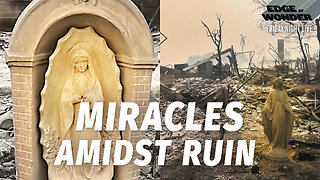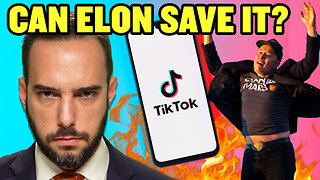Premium Only Content

#301 Business Model Framework
A business model is a conceptual framework that outlines how a company plans to create, deliver, and capture value. It describes the fundamental aspects of how a business operates, generates revenue, and sustains itself. A well-defined business model helps a company understand its customers, competitors, and the market it operates in. There are various types of business models, and a company may use one or a combination of them to achieve its goals. Here are some common business models:
Subscription Model: Customers pay a recurring fee at regular intervals (monthly, annually) to access a product or service. Examples include Netflix, Spotify, and SaaS (Software as a Service) companies like Adobe Creative Cloud.
E-commerce Model: Businesses sell products or services online through a website or platform. Examples include Amazon, eBay, and Shopify.
Freemium Model: Offers a basic version of a product or service for free while charging for premium features or additional functionality. Examples include Dropbox, Evernote, and many mobile apps.
Advertising Model: The company provides content or services for free and generates revenue by displaying ads to users. Google and Facebook are prime examples of this model.
Marketplace Model: Facilitates transactions between buyers and sellers, charging a fee or commission for each successful transaction. Examples include eBay, Airbnb, and Uber.
On-Demand Model: Provides goods or services on demand and charges customers per use. Examples include ride-sharing services like Lyft and food delivery platforms like Uber Eats.
Franchise Model: A parent company licenses its business model and brand to independent operators (franchisees) in exchange for fees or royalties. Examples include McDonald's, Subway, and Hilton.
Direct Sales Model: Products or services are sold directly to customers without intermediaries, typically through a sales force. Companies like Avon and Amway use this model.
Razor and Blade Model: The initial product is sold at a low or even a loss to drive demand for complementary products or services. For instance, printers are often sold at a low price, but ink cartridges are expensive.
Crowdsourcing Model: Leverages a community of users or contributors to create or improve products, services, or content. Wikipedia and Kickstarter are examples.
Asset-Light Model: The company doesn't own many physical assets and instead relies on partnerships, outsourcing, or renting assets. Airbnb and Uber fall into this category.
Manufacturer Model: Companies produce physical products, often at scale, and distribute them through various channels, such as wholesalers, retailers, or directly to consumers.
Nonprofit Model: Organizations focused on achieving social, environmental, or humanitarian goals may rely on donations, grants, or government funding rather than traditional profit-making.
Consulting and Service Model: Businesses provide consulting or professional services in exchange for fees. Examples include law firms, management consultants, and marketing agencies.
A successful business model aligns with a company's core competencies, target market, and competitive advantages. It should also be flexible enough to adapt to changing market conditions and customer preferences. The choice of a business model is a crucial strategic decision that impacts a company's revenue, cost structure, and overall long-term viability.
www.antharas.co.uk/ companies website or top book distributors!
-
 8:44
8:44
AV
5 months ago#1142 Press release - Guide to innovationin the NHS
6 -
 1:04:58
1:04:58
In The Litter Box w/ Jewels & Catturd
1 day agoNo Tax On Tips! | In the Litter Box w/ Jewels & Catturd – Ep. 722 – 1/17/2025
108K29 -
 5:35:39
5:35:39
Dr Disrespect
9 hours ago🔴LIVE - DR DISRESPECT - WARZONE - CRAZY CHALLENGES
139K29 -
 LIVE
LIVE
Edge of Wonder
5 hours agoLA Fire Updates: Miracles Amidst the Devastation
650 watching -
 54:54
54:54
LFA TV
9 hours agoBanning Mystery of the Ages | TRUMPET DAILY 1.17.25 7pm
4.1K1 -
 LIVE
LIVE
2 MIKES LIVE
2 hours ago2 MIKES LIVE #168 Open Mike Friday!
206 watching -
 1:05:11
1:05:11
Sarah Westall
3 hours agoMysterious Fog and California Wildfires Both Contain Dangerous Elements w/ Dr Robert Young & Hazen
6.64K3 -
 DVR
DVR
Mally_Mouse
2 hours agoLet's Play!! -- Stardew Valley pt. 23!
11.3K -
 16:21
16:21
China Uncensored
5 hours agoCan Anything Stop the Tiktok Ban?
26.4K9 -
 7:08
7:08
Guns & Gadgets 2nd Amendment News
10 hours agoTruckers Fight For National Reciprocity
19.6K7